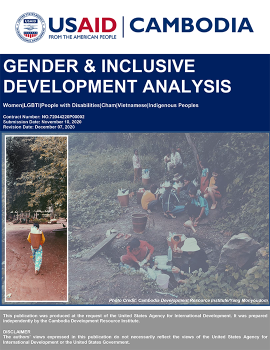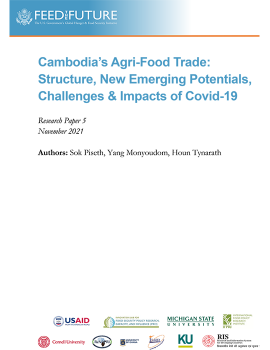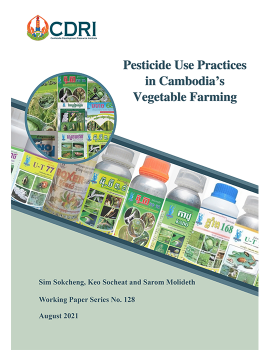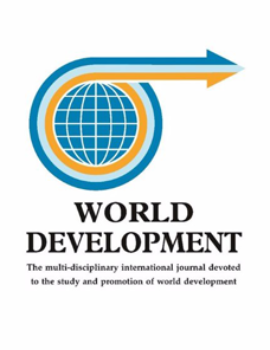Abstract/Summary
This study reports the results of a comprehensive gender and inclusive development analysis (GIDA) to inform the United States Agency for International Development (USAID)‟s workplans regarding Cambodia‟s Country Development Cooperation Strategy (CDCS) for 2020– 2025. The GIDA uses a combination of quantitative and qualitative methods to identify macro and sectoral level gender gaps, social inequalities, and barriers that exclude minority groups from accessing basic services and enjoying their rights. This report provides results and recommendations on how to address gender and inclusive development gaps and barriers in the CDCS based on information about groups that are particularly disadvantaged due to an intersection of identities that are discriminated against in the Cambodian context. Three elements of this GIDA stand out: the inclusion of people of Vietnamese descent living in Cambodia, the undertaking of an intersectional analysis, and the use of participatory photography. The inclusion of people of Vietnamese descent in this study is groundbreaking: no other noticeable international development efforts are operational in this community. The recent government census of Vietnamese populations living in Cambodia since 2015 led to the deportation of some Vietnamese people; the majority were recognized as legal foreign residents of Cambodia. Despite having legal status, people of Vietnamese descent continue to be denied access to Cambodian nationality/citizenship, even though as long-term residents (e.g. those living in Cambodia pre-1975 or earlier) they should be considered under relevant provisions of Cambodia‟s Nationality Law. People of Vietnamese descent included in this study are long-term resident populations who are currently not recognized as citizens in Cambodia and await assessment for naturalization as explained in Section 1.1. Meanwhile, academic studies on the group (Sperfeldt 2020; Rumsby 2020; Canzutti 2018; Sperfeldt and Nguyen 2012), and the recent UN rapporteur‟s report (United Nations 2019) have emphasized the risk of statelessness among the group, especially among children who lack birth certificates. The intersectional analysis of this research is based on quantitative data from a household survey conducted in 16 provinces, and qualitative data from interviews conducted with key and relevant stakeholders and focus group discussions with target groups. The combination of quantitative and qualitative data allows for an analysis that not only identifies gaps in inclusive development, but also provides a systematic approach to understanding the social, political and economic mechanisms driving these gaps. The merit of an intersectional analysis is that it draws attention to the variation of experience among groups of the six domains studied in this GIDA. The six domains cover (1) laws, policies, regulations and institutional practices; (2) cultural norms and beliefs; (3) roles, responsibilities and time use; (4) patterns of power and decision making; (5) access to and control over assets and resources; and (6) personal safety and security. Participatory photography was used in the Cham community of Chheu Teal Phlous village in Kratie province, and the indigenous community of Bou Sra village in Mondulkiri province. The use of participatory photography is particularly useful in understanding micro-level issues that interrupt people‟s daily lives. Unfortunately, time did not permit us to roll out this method across all groups, yet the data derived from handing over the lens of enquiry revealed concerns about the education of girls, waste management, and the unequal distribution of aid as laid out in Section 3.1.
Download Link: https://pdf.usaid.gov/pdf_docs/PA00X7PN.pdf




